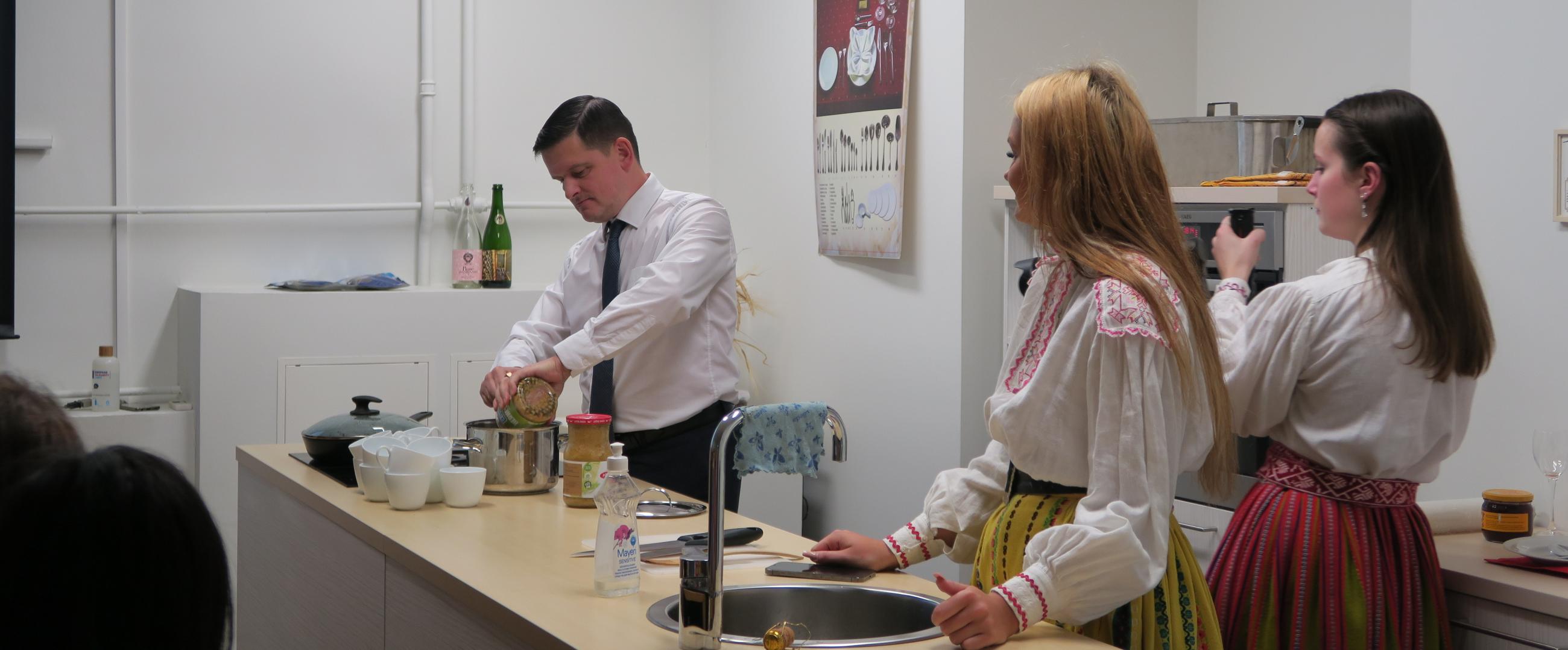Estonian Food Night

I had the opportunity to take part in an Estonian food evening with a small group of international students. I had been telling people that I have been in Estonia for months and had not tried any Estonian foods. I cook at home and have not eaten out much. Even still it did not seem like there were any affordable places specializing in Estonian cuisine. I had eaten blood sausage when I visited in 2014 and had plain lentils and buckwheat during a school visit.
The night started with a brief introduction to the historical periods of Estonian cuisine. First was the peasant kitchen or the “Talupojaköök, followed by periods of German and Russian rule, then the late 19th early 20th century birth of Estonian “cuisine”, the Soviet period, and the modern-day new Estonian cuisine. Modern Estonian cuisine is heavily influenced by its past and climate. Estonian peasants were poor and had to make food last through the long harsh winters. The winters also meant that certain crops just were not suitable to be grown here. We started first with a fish sampling of Baltic herring, sprat on rye bread with a slice of boiled egg, very expensive eel, and a smoked fish. The host for the evening enthusiastically explained that the eel could be found freshly smoked before taking a ferry to one of the islands and that this was one of the best ways to have it. We next learned that before potatoes were king, rutabaga (kaalikas) and turnips were the more common root vegetables. We were given raw slices of rutabaga to try and was unappealing to me, but the earthy qualities it had made me want to try and cook with it. We also tried two types of fermented cabbage and some beetroot. We were then told about the practicality of vegetable soup (kukeseenekaste). We were given a jared variety that I had seen in stores, and we were encouraged to get it, as it is a cheap way to eat as students. The women’s associations in the 19th century began teaching women about canning (hoidistamine) and we were given some canned chanterelle mushrooms to try. We tried some canned elk and head cheese and were told a little about modern hunting in Estonia. Our perhaps main dish came out soon after, a pork meatloaf with a boiled egg in the middle that I only remember being called a big boy. This was followed by the obligatory blood sausage, a dish that freaked some people out but I was delighted to have the second time that week. We learned about hernesupp utilizing the last scraps before spring. I was surprised that dairy is a relatively modern staple addition to Estonian tables. We had a sampling of different products including sõir, a caraway flavored cheese popular in the west. We end the night with beverages, first nonalcoholic like kali, a sweet rye bread drink, and assorted milks. This was followed by a sampling of beers with smoked lake fishes.
This evening helped me understand a bit more background information about Estonian cuisine but also inspired me to get more ingredients that I would not have normally purchased. I really want to try and make gnocchi with kohupiim, I think it can work and would be really nice with blood sausage coated in a red wine reduction. We were told that modern Estonian cuisine embraces the Scandinavian idea of minimalism, and I will endeavor to stick with that, make something new, but let the product shine through.